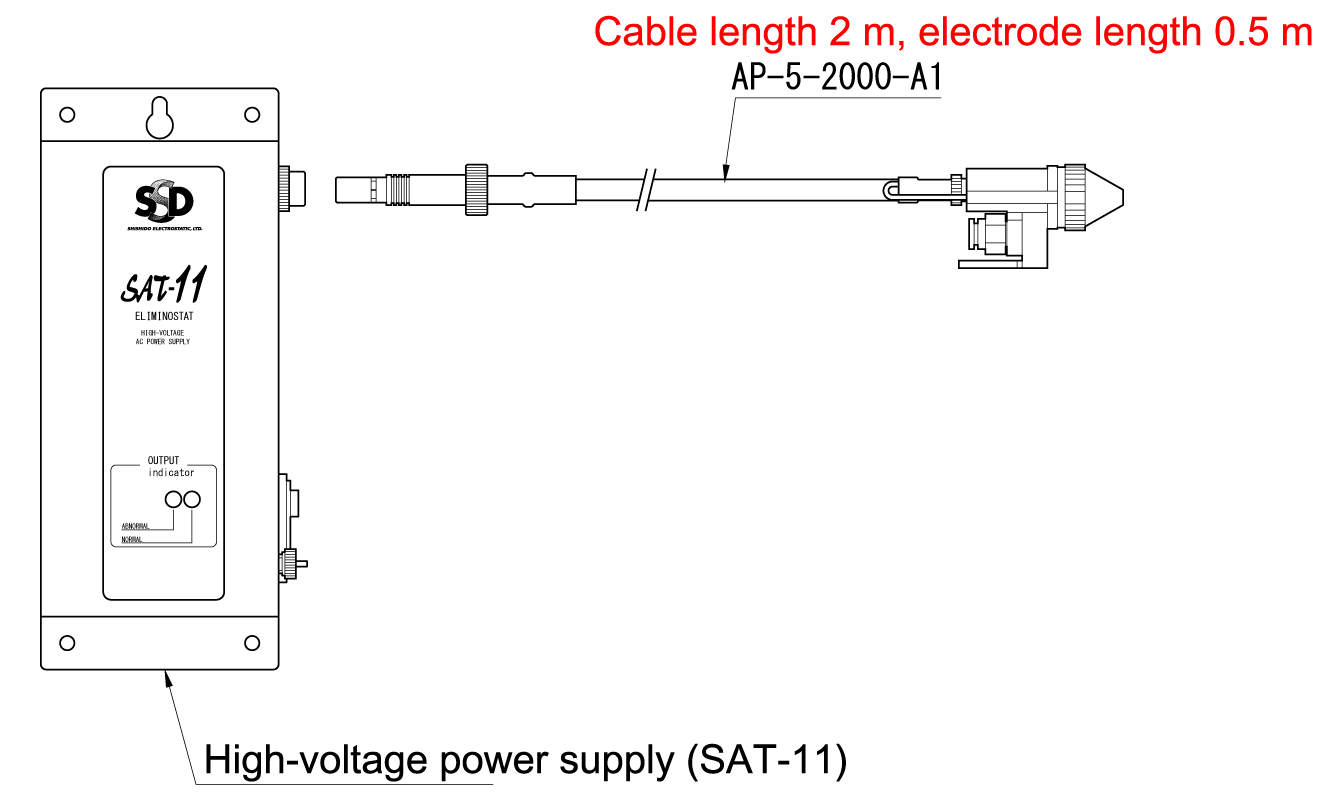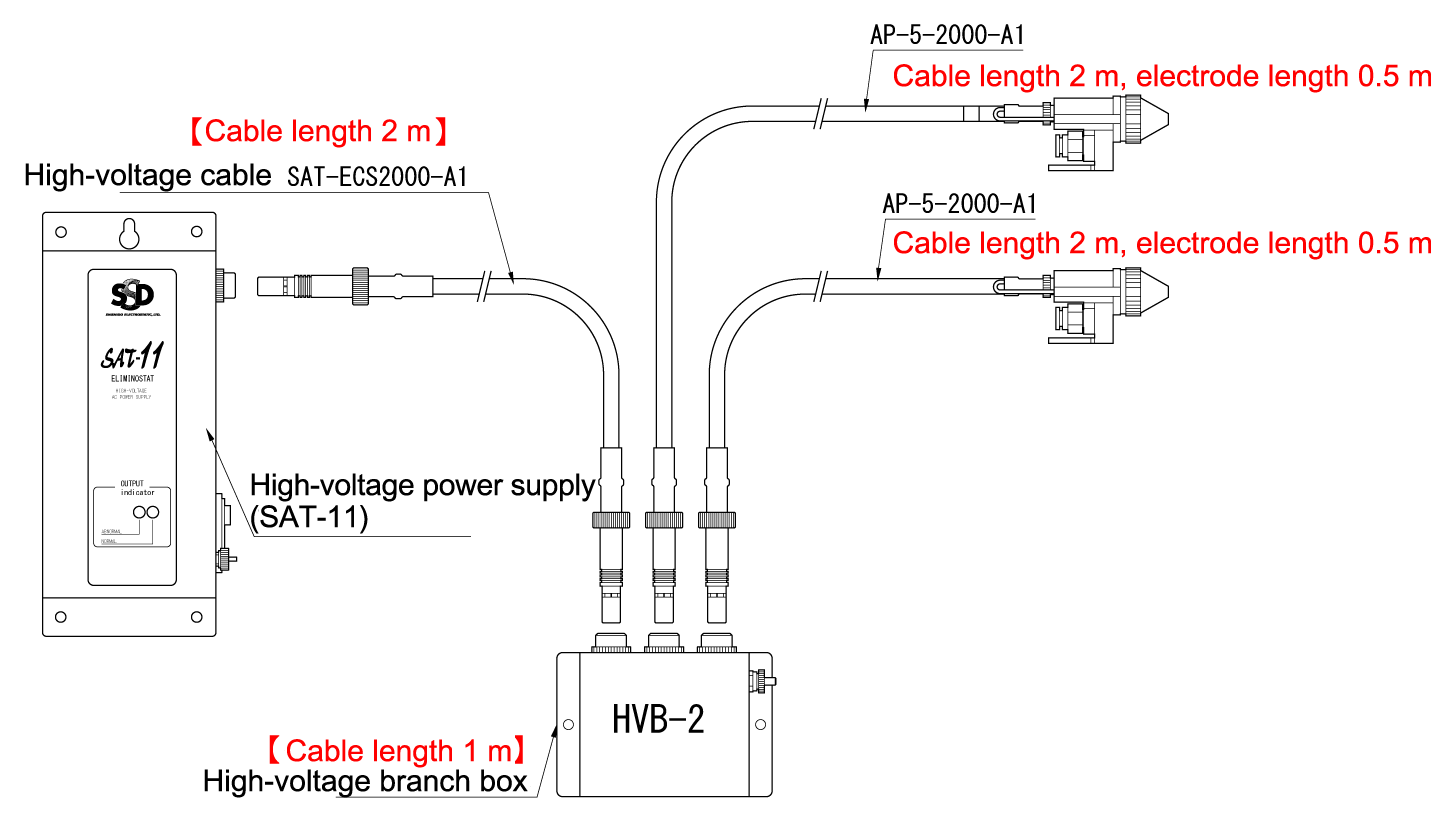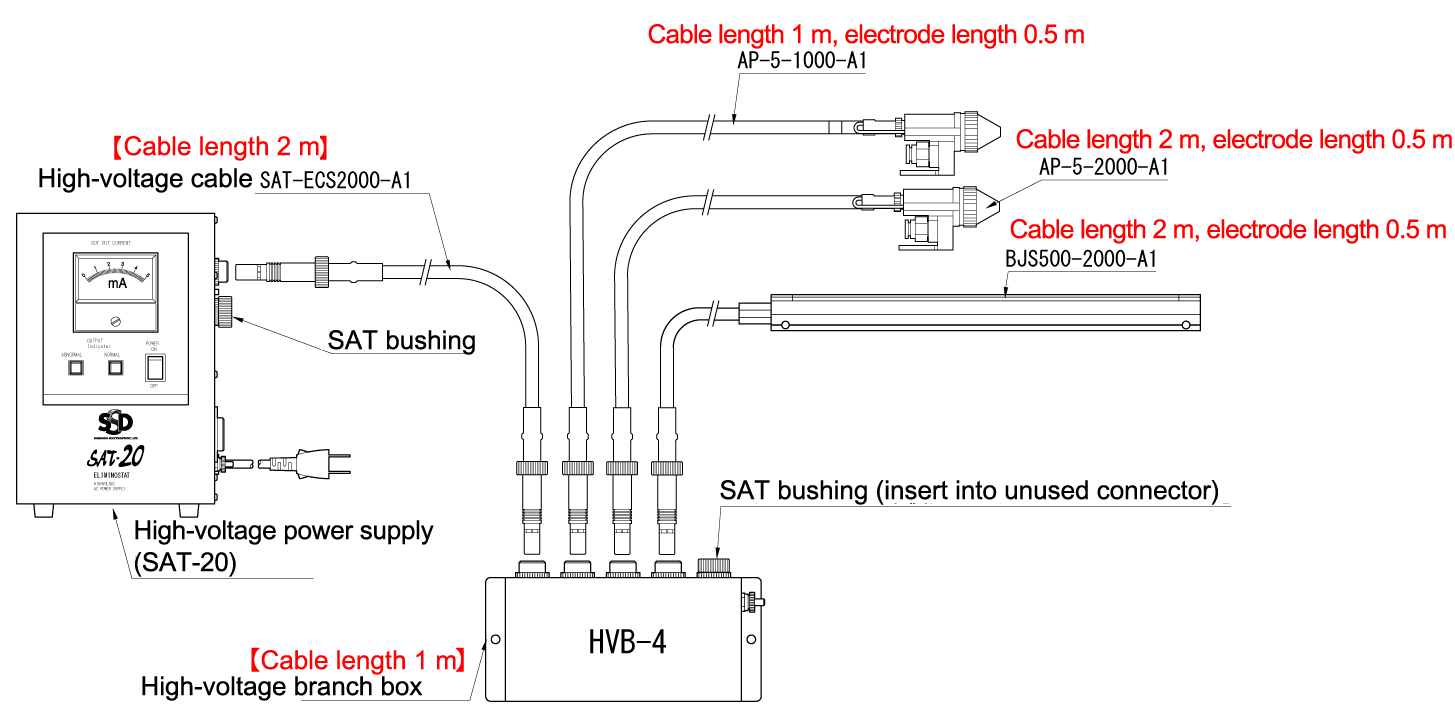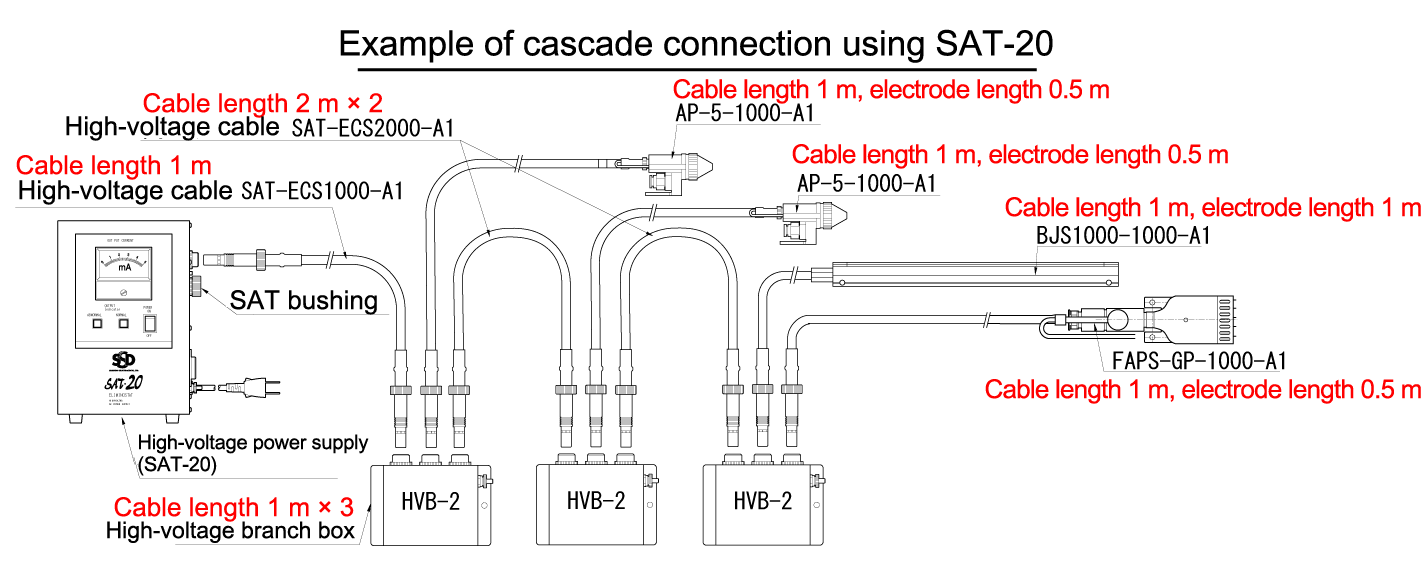Wiring Examples and Precautions for High-Voltage Power Supplies and Static Elimination Electrodes (ELIMINOSTAT: SAT Series)
Wiring examples and precautions
Wiring examples for SAT Series high-voltage power supplies and static elimination electrodes
This page explains wiring examples for high-voltage power supplies in the SAT Series and AC high-voltage application type static elimination electrodes (bar type, air type).
With a high-voltage power supply, the maximum load current is determined by the model, and a load exceeding that cannot be connected. The load current which normally flows through each static elimination electrode varies depending on the length of the electrode and the cable. Therefore, selection must be done so as not to exceed the maximum load current of the connected high-voltage power supply when the two are combined. At Shishido Electrostatic we recommend reading load current as "electrode length" and "cable length" when selecting an electrode, and using the [Important calculation formulas] indicated below. At this time, set the branch box cable length to 1 m, and for the electrode length of AP-5, AG-5, and FAPS-GP, convert with 0.5 m.

Important calculation formulas
Precautions when wiring a high-voltage power supply and high-voltage application type static elimination electrode
When using an AC high-voltage application type static elimination electrode, be sure to connect it to a high-voltage power supply. When using multiple electrodes, connect to the high-voltage power supply using a branch box. Use the "Important calculation formulas" to check that the maximum connectable length of the high-voltage power supply is not exceeded. A high-voltage application type static elimination electrode is a high-voltage device. Perform wiring correctly by following the precautions indicated below. Please check the Instruction Manual for more details.
| Total of electrode length and wiring length | Select so as not to exceed the "Important calculation formulas." |
|---|---|
| Insertion of electrode connector | Insert the connector all the way, and securely fasten with the threaded ring. |
| High-voltage cable | Avoid applying strong forces, such as binding tightly with cable ties or pulling hard, and set the bending radius to 60 or more. |
| Proximity of electrode and grounded body | Each electrode has a settable minimum distance. For details, see the Instruction Manual. |
| Distance between electrode and object for static elimination | Each electrode has a settable distance. For details, see the Instruction Manual. |
| Relationship between object for static elimination and grounded body | There are cases where there is no static elimination effect if there is a grounded body near the object for static elimination. For details, see the Instruction Manual. |
| Cleaning, maintenance | A static elimination electrode is a high-voltage device, and requires periodic cleaning. For details, see the Instruction Manual. |
| Unused SAT female connector | Be sure to insert an SAT bushing (optional) into the excess SAT female connector in cases such as when an electrode has become unnecessary due to a branch box, etc. |
Wiring and calculation examples for high-voltage power supplies and static elimination electrodes.

Connection example 1:
[Electrode total length] = 0.5 m
[Cable total length] = 2 m Total 2.5 m < 8 m

Connection example 2:
[Electrode total length] = 0.5 m+1 m=1.5 m < 10 m
[Cable total length] = 5 m+2 m = 7m < 12mTotal length is 8.5 m, so SAT-11 cannot be used.

Connection example 3:
[Electrode total length] = 0.5 m+0.5 m = 1 m
[Cable total length] = 2 m+2 m+2 m+1 m = 7 m
Total 8 m ≤ 8 m

Connection example 4:
[Electrode total length] = 0.5 m+0.5 m+0.5 m = 1.5 m < 10 m
[Cable total length] = 2 m+1 m+2 m+2 m+1 m = 8 m<12 m
Total length is 9.5 m, so SAT-11 cannot be used.

Connection example 5:
[Electrode total length] = 0.5 m+0.5 m+1 m+0.5 m = 2.5m < 10m
[Cable total length] = 1 m+1 m+2 m+1 m+2 m+1 m+1 m+1 m+1 m+1 m = 12 m ≤ 12 m
Total length is 14.5 m, so SAT-11 cannot be used.
![Real ESD Solutions & Ionizer [SHISHIDO ELECTROSTATIC, LTD.]](/img/logo-en.png)
![Real ESD Solutions & Ionizer [SHISHIDO ELECTROSTATIC, LTD.]](/img/logo_fixed-en.png)